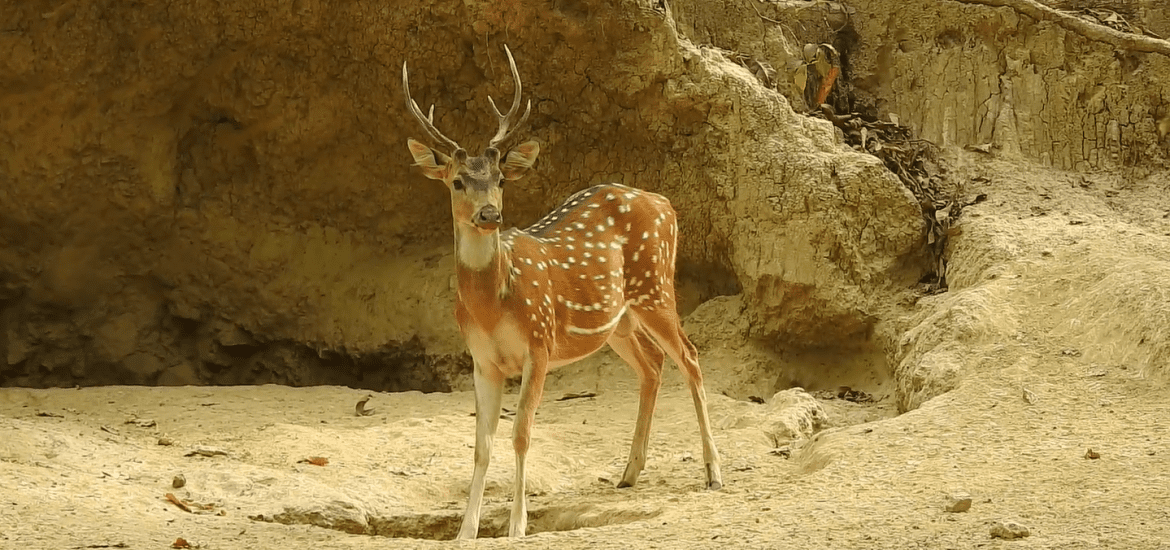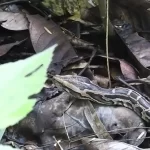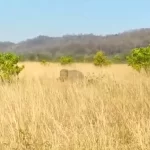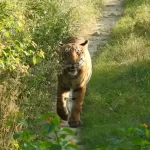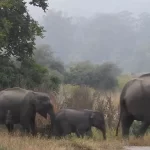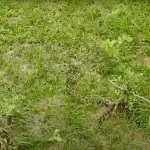Spotted Deer is the most common of the four species of deer found in Corbett Tiger Reserve. It is one mammal that can be found in almost all habitats including grasslands, riverbeds, open scrub forest, thick mixed and Sal forests and occurs from the low-lying southern areas like Dhela and Jhirna zobes of the reserve to the highest possible northern locations in the reserve like Kanda forest resthouse.
Spotted Deer has white-spotted reddish-brown upperparts, white underparts and a black stripe running down the back. The males are larger than females. A fully grown male can weigh about 75 kg and the female about 45 kg. Only the males carry antlers that can be upto 75cm long. These antlers are shed annually after the breeding season of the species is over. The antlers are used in mating displays, fighting other males and as defence against predators.
Spotted Deer have a good and strong senses of smell, hearing and vision. When the proximity of a predator is sensed, the Spotted Deer communicate danger to others by raising their characteristic alarm calls that can frequently be heard in the forest. A herd animal, the Spotted Deer can occur in small to very large herds that can be several hundred in strength. Spotted Deer is threatened by illegal hunting for bush meat, habitat loss, degradation of habitat due to human encroachment and spread of invasive species of plants like ‘lantana’
As per one estimate, there were more than forty thousand Spotted Deer in Corbett Tiger Reserve in 2008. However, today the unconfirmed estimates place their numbers above sixty thousand. Corbett Tiger Reserve has more than 250 tigers, as per the last census. It is the abundance of the prey species animals, including the Spotted Deer that sustains such a large population of tigers in the reserve.
This beautiful young male Spotted Deer was recorded at Jhirna Sot by Jim’s Jungle Retreat naturalist Jeewan Rautela.
